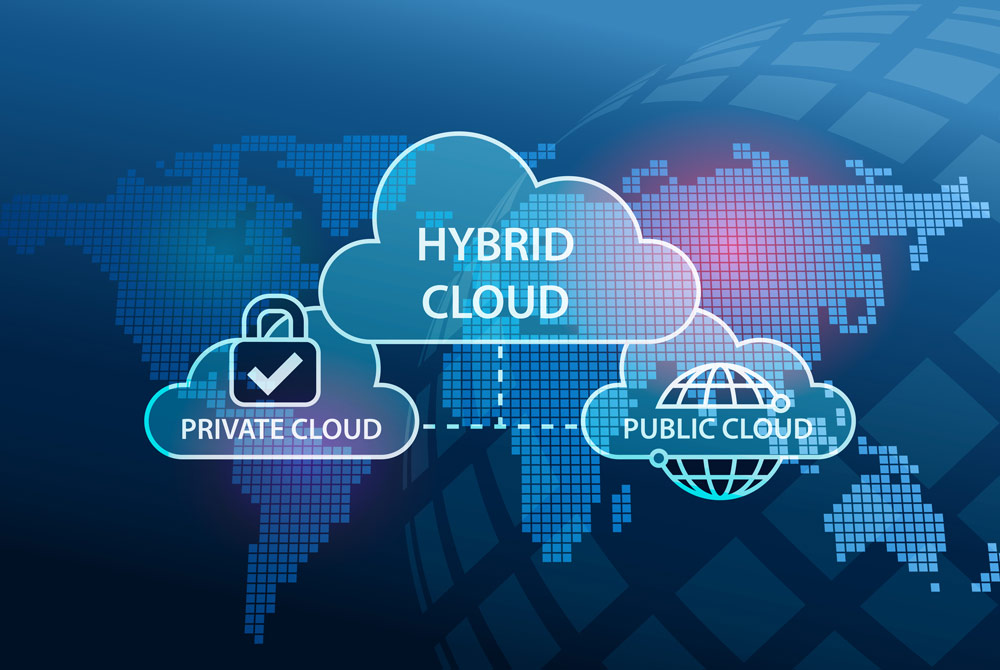The advantages and disadvantages of cloud-based computing
Cloud computing is one of the most significant platform shifts in the history of computing, considering it’s still quite young, (although the term Cloud Computing is actually almost 3 decades old). This shift has been mostly driven by the promise of scalability, on-demand capacity and managed infrastructure, all delivered at a cost-effective price with the additional benefit of freeing up internal resources to focus on other activities.
“The Cost of Cloud, a Trillion Dollar Paradox” by Sarah Wang and Martin Casado provides some interesting reading around the cost challenges of public cloud services and the predicament that many organisations find themselves facing.
Essentially, it’s reported “As industry experience with the Cloud matures along with the explosion of new feature and products, we see a more complete picture of Cloud lifecycle on a company’s economics. It’s becoming evident that while Cloud computing delivers on its promise early on in a company’s adoption of the Cloud, the pressure it puts on operating profit and margins can start to outweigh the benefits, especially as a company scales and growth slows down, this shift happens later in a company’s life and as such it can be very difficult to rebalance or reverse.” Hence The Cloud Paradox.
What is the true cost of cloud computing?
Public Cloud is dominated by 3 big players; Amazon, Microsoft and Google, each one provides cost calculators to help organisations identify their potential spend. This works well for SaaS (Software As A Service) applications such as Microsoft 365 and Google Workspace as it’s a simple multiplier (number of licenses X cost of license). However, when it comes to IaaS (Infrastructure As a Service), like Microsoft Azure and Amazon Web Services, the formula is far more complicated and the cost calculators are nothing more than broad estimators.
What is SaaS and IaaS anyway?
SaaS (Software as a Service) is a technical term for renting software, usually on a monthly basis, rather than owning it outright. IaaS (Infrastructure as a Service) is a similar concept but for your entire IT infrastructure. Both approaches are popular due to their low initial expense, predictable ongoing costs and flexibility.
Service providers and cloud vendors will tell you they have tools to measure your current compute, memory and storage usage, which they can use to provide you with a nicely formulated report detailing your workloads and estimated cloud cost. All of which is very useful but be careful! Moving your workloads is rarely as simple as a lift and shift, it is a complex process that requires careful planning and understanding of your workloads. There are often many additional costs that are unrecognised in the early stages and only come to light as the business scales, which can result in increasing costs over time.
According to Gartner, organisations that fail to plan this correctly are overspending by about 40% in the cloud.
Organisations that don’t plan correctly are overspending by about 40% in the cloud.
The Cloud Paradox – how you can get trapped paying too much for the wrong cloud service
So, you are heavily invested in the cloud, you need the cloud, and understand it has great benefits to your business but you want to avoid spiralling costs, so what can you do?
You cannot simply move everything back to an on-premise solution, this would be irrational as you will lose all the scalability and cost savings that the cloud has to offer. But you cannot possibly continue to overspend on Private Cloud solutions either, so you are trapped in the Cloud Paradox.
The answer can be found in choosing the right type of cloud and making sure your cloud strategy aligns with your business goals.
 One solution to consider is Hybrid Cloud. Hybrid Cloud uses the best part of public (such as Microsoft, Google or AWS) and Private Cloud solutions (your own, privately hosted cloud) and can certainly balance the scales and help companies grapple with the ballooning cost.
One solution to consider is Hybrid Cloud. Hybrid Cloud uses the best part of public (such as Microsoft, Google or AWS) and Private Cloud solutions (your own, privately hosted cloud) and can certainly balance the scales and help companies grapple with the ballooning cost.
The 4 steps to choosing the right cloud options for your organisation

1. Review and Optimise
The first step is to review your cloud estate, as understanding the workloads, capacity usage and license management is paramount in controlling cloud costs. Several third-party optimisation tools can provide quick gains to existing systems, the savings claimed can range anywhere from 10-40% on annual cloud spend. Cloud cost optimisation is the process of continually evaluating and configuring all the cloud resources that drive the applications, infrastructures, and workloads of your business.
2. Incrementally repatriate
Once you have carefully reviewed your cloud estate, plan the services which can be repatriated (brought back in-house) incrementally, these are typically workloads that are either resource-intensive or customised for a particular organisation.
3. Review any global services
Public Cloud works particularly well with global collaboration services such as email and workspaces, so these would not generally form part of your repatriation strategy, but should definitely form part of your optimisation process.
4. Plan and engage with your IT Partners
Make sure IT Support partners and your system architects are aware of the potential for repatriation early on because by the time cloud costs start to catch up to or even outpace revenue growth, it’s already too late.
Summary

The spectacular growth of Public Cloud services shows little sign of easing. According to Deloitte, the main cloud providers are expecting annual revenues in the sector to grow by at least 30% through to 2025 and beyond. This dynamic billion-dollar industry is driven by the fact that more organisations are keen to leverage the agility, flexibility, and speed of execution that leading-edge cloud services can deliver.
The downside of this positive growth trend is the extent to which businesses are not properly utilising their cloud spending. According to Gartner, organisations that lack appropriate cost optimisation processes are overspending by about 40% in the cloud.
You get stuck in the Cloud Paradox between the benefits of on-demand Cloud capacity and the spiralling cost pressures to your business.
Pay special attention to your Cloud estate, optimise workloads and consider the repatriation of certain workloads in a Hybrid Cloud environment. Speak to Coretek and we can certainly help you avoid the Cloud Paradox.
The next step
Do you need help understanding your cloud environment or the options available? Do you want to make sure you are not stuck in the Cloud Paradox paying too much for your cloud services? Our team have helped numerous businesses move to the cloud, helping them slash up to 6 figures off their IT costs. Get in touch today if you would like to find out more.

